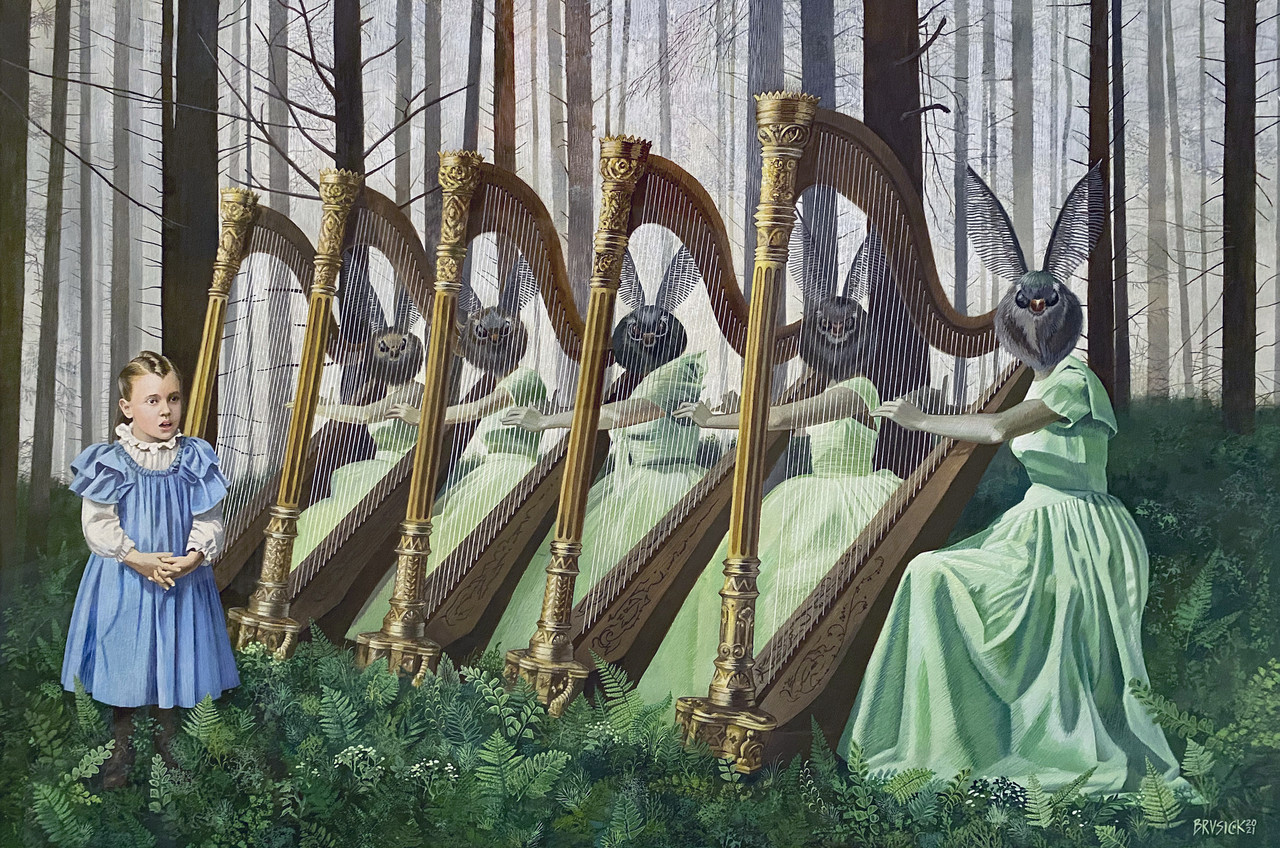
Wendy Brusick
The Moth Harpists of Trinidad, 2021, Gouache on Arches Paper, Courtesy of the Artist.
Visit Wendy Brusick’s website
Facebook: @Wendy Brusick Creative
Instagram: @wendybrusick
Hear from the Artist
Transcript
My name is Wendy Brusick and the work I am exhibiting in the Newport Biennial is called The Moth Harpists of Trinidad.
The medium is gouache paint on Bristol paper. For those of you who might not be familiar with gouache, it’s an opaque watercolor paint. To render something on paper, I lay down blocks of color that dry in layers working from dark to light. I crosshatch on top with tiny strokes, a little like embroidery, building up the color and highlights. A large painting like this takes me well over 100 hours to complete. Some people wonder how I made the white strings on the harps. I used a permanent opaque white ink pen with a propped up straight edge as my guide. Working from left to right, I held my breath drawing each line.
My paintings are realist but not illustrative. In fact, it’s the other way around. The images in my paintings often serve as cues for writing fiction, another avenue of expression for me. I don’t think of my paintings as surreal either. I enjoy works by René Magritte, Paul Delvaux, and Salvator Dalí, but that chapter in art history came before my time. I’d like to think I’m in good company with painters who simply march to their own drummers. Out of the box artists like Hieronymus Bosch, Remedios Varo, and Peter Paone. I admire their unique visual expression using highly personal symbolism, and their myopic attention to detail. We are all storytellers, presenting curious and sometimes baffling narratives that encourage contemplation and alternative interpretation.
The Moth Harpists of Trinidad was inspired on a road trip in northern California. When I stopped along a coastline forest shrouded in fog to take photographs, it seemed as if I had stepped into some mystical, other worldly place. My imagination ran wild. Anything could happen in that private space with its boundaries obscured by white mist. The disembodied sound of the ocean beating a steady rhythm triggered a fantasy of enchanted music. Who were the players?
Back in the studio I combined a 1950’s photo reference of women harpists with the heads of moths to create musicians who might belong in that forest. Why moths? The gentle, cascading sound of the harp suggested these graceful, winged insects. Harbingers of the mysterious night, they flutter out of nowhere drawn to a light. Their powdery wings reminded me of the delicate fabric of the harpists’ formal gowns. The singing child materialized later, a character expressing the forlorn feeling of that world.
Thank you for looking and listening.